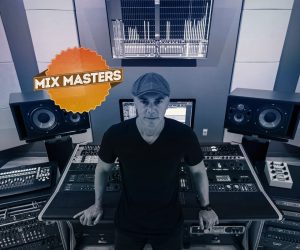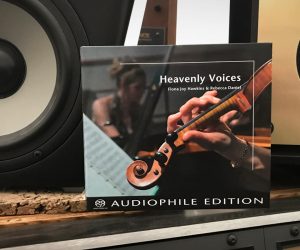
Top 5: Daniel Moyler
From Trevor Horn’s teaboy to winning a Grammy in 2021 for work on Dua Lipa’s ‘Future Nostalgia’, London-based Daniel Moyler has had one heck of a career. Here are his Top 5.
By Joe Matera
17 September 2024
LMT 3630
It’s known as the ball and biscuit microphone and it is a really great dynamic mic from the 1950s that was made by the French company LMT. I use it as a kind of ‘crushy’ mono thing and it does get used a lot in my studio. I always choose it for recording whole horn sections through it. So, there’ll be this tiny little mic and it will be the bulk of any horn section, even though there are all these big fancy ribbons doing close miking on them. So, the ‘ball and biscuit’ will end up being the one that gets the most love. I find that it just brings out the raspiness of the horns really well, and not only that, but it glues the section together quite nicely. I love using it on drums too, as it stops the drums sounding like different individual instruments, bringing it all together in the recording as one cohesive kit.


SHURE 520 DX
This is another shitty little microphone that I bring everywhere, that is better known as the ‘Green Bullet’ – a Shure 520 DX. The model I have is the modern version, which was originally meant to be a harmonica mic. It’s built to be held in your hands and has a little volume control on it. And because the mic makes everything sound really small and tinny in a really nice way, it too gets used quite a lot on different instruments, especially on drums. I will usually position it on the floor and usually behind the drummer, so that it can give me a lot of ‘smack’ off the kick drum and off the snare. When recording drums, there is a temptation to go over the top and make everything sound massive, but this really puts it all into a nice little small space.
AUDIO KITCHEN THE BIG TREES
This is basically a little tube amp in pedal form I use a lot as an overdrive or just as a nice little tube gain staging thing. The ‘pedal amp’ is made by this amazing guy called Steve Crow in London. I use it pretty much every time I am recording bass. While it doesn’t have to do a lot, it makes everything sound much better, especially if you’re working a lot with DI’ed sources, where it will really elevate the tone nicely. I also use it as an amp, as it has a speaker output on it. So, in using it that way, I will just plug it into whatever’s available in order to get a really nicely overdriven tube sound without it being too loud.


BOSS CHORUS ENSEMBLE CE-2
I think it is a model that was initially made in Japan in the 1970s. As you will see from the photo, it is a bit beaten up, and very crusty looking, but sounds incredible. It breaks up really nicely and is a nice antidote to all those in-the-box chorus effects. I used it a lot on the Olivia Dean record, ‘Messy’, and it ended up being on the bass quite a bit on that record too. Not only does it sound really good on bass, but also on lot of pianos, and a lot of keys as well. It’s incredibly noisy though, and I don’t really know why. It just sounds like the ocean is chorus-ing in the background.

SOUNDGAS GRAMPIAN SPRING REVERB 636
It is kinda limited in its capacity, so you can’t really mess around with the length of the spring or anything like that, but it sounds like the real deal. It doesn’t sound like anything you can get out of a plugin and because of that, I end up using it a lot in mixes, where I will send a vocal out through the Grampian and it will really elevate the recording. It’s also got a lovely warmth to the tail of the reverb, which is always a nice thing to have in a mix.






















RESPONSES